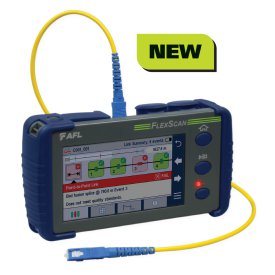All You Need to Know Regarding Robotic Vision and Its Applications in Advanced Optical Dimension Systems
Robotic vision represents a considerable innovation in the intersection of computer system vision, man-made intelligence, and equipment discovering. This technology improves the precision of optical measurement systems, enabling real-time information evaluation and boosted quality assurance. Its impact extends multiple industries, from manufacturing to medical care. The developing landscape of robotic vision raises questions regarding future capabilities and applications. What advancements lie in advance in this transformative area?
Understanding Robotic Vision: Trick Concepts and Technologies
Robotic vision includes the modern technologies and techniques that make it possible for makers to analyze and understand aesthetic information from their atmosphere. This area incorporates aspects of computer vision, fabricated knowledge, and equipment discovering to promote automatic decision-making based on aesthetic data. Key principles include image handling, which includes the enhancement and analysis of photos to draw out meaningful attributes, and item acknowledgment, which permits makers to determine and classify things within a scene.

The Assimilation of Robotic Vision With Optical Dimension Solutions
As markets progressively demand accuracy and effectiveness, the combination of robotic vision with optical measurement systems has actually arised as a transformative technique. This synergy allows robots to perceive and interpret their environments, improving the ability of optical dimension systems to evaluate and analyze items with unrivaled precision. By equipping optical sensors with sophisticated imaging technologies, robotic vision allows real-time data collection and handling, promoting instant changes to dimension parameters.
Furthermore, the mix equips automated systems to detect variations in measurements, surface quality, and placement, which are vital in quality control procedures. Enhanced algorithms, such as artificial intelligence, additional increase this combination by enhancing the systems' capability to adapt to different settings and circumstances. Subsequently, the combination not just simplifies dimension processes yet also minimizes mistakes, making certain that products satisfy stringent sector requirements, thus strengthening the function of robot vision in the future of optical dimension systems.
Applications of Robotic Vision in Production
In modern manufacturing atmospheres, the usage of vision systems has actually reinvented manufacturing procedures by enabling devices to carry out tasks with exceptional accuracy and rate. Robotic vision systems are progressively used for quality control, where they check products for problems and warranty adherence to specifications. These systems utilize video cameras and advanced algorithms to evaluate products in real-time, significantly lowering the threat of human mistake.
Furthermore, robotic vision helps with automation in production line, permitting robotics to precisely recognize components and construct them with marginal downtime. This technology likewise enhances stock monitoring, as vision systems can keep track of supply levels and discover disparities, guaranteeing a smooth supply chain.
Moreover, robotic vision help in the implementation of smart factories, where data from vision systems can be integrated with other innovations to enhance workflows. Overall, the applications of robot vision in manufacturing show its important function in boosting effectiveness, quality, and efficiency across numerous industries
Robotic Vision in Medical Care: Revolutionizing Person Care

In recovery, robot vision aids in keeping track of individual development and tailoring therapy sessions to individual demands. It supports doctor by automating tasks such as information collection and client surveillance, allowing for even more time to concentrate on straight person communication. In addition, robotic vision boosts telemedicine by enabling remote diagnosis and virtual appointments, connecting the gap between people and doctor. On the whole, the application of robotic vision in health care is changing client treatment, causing improved results, performance, and client satisfaction.
Future Trends and Advancements in Robotic Vision Technology
The rapid advancement of robot vision innovation guarantees to better improve its applications throughout various industries, including health care. Future fads suggest a significant change in the direction of incorporating expert system and artificial intelligence, enabling systems to discover this info here gain from vast datasets and boost accuracy with time. Boosted sensing unit technologies and deep knowing algorithms are anticipated to fine-tune object acknowledgment abilities, enabling robotics to interpret intricate settings better.

The assimilation of increased fact (AR) with robot vision will likely transform exactly how robotics help in medical treatments and diagnostics. This synergy will certainly facilitate real-time information visualization, improving decision-making processes. In addition, miniaturization of elements will result in more small and flexible robotic vision systems suitable for a variety of tasks. As these innovations unfold, industries will certainly witness raised automation and effectiveness, solidifying robotic vision as a cornerstone of cutting-edge technological remedies.
Frequently Asked Questions
What Are the Key Elements of a Robot Vision System?
The main components of a robotic vision system include video cameras for photo capture, cpus for information analysis, formulas for interpretation, and actuators for activity. With each other, these components allow robots to perceive and communicate with their atmosphere properly.
Just How Does Robotic Vision Improve Accuracy in Measurements?
Robotic vision find out here now improves dimension accuracy by using advanced imaging innovations, allowing specific item discovery and spatial evaluation. This capacity reduces human error, raises repeatability, and enables real-time adjustments, inevitably enhancing general measurement dependability and efficiency.
What Industries Benefit Many From Robotic Vision Innovation?
Various industries profit significantly from robot vision innovation, consisting of production, healthcare, agriculture, and logistics. These markets make use of boosted accuracy, effectiveness, and automation, resulting in enhanced efficiency and lowered operational costs in their respective processes.
Can Robotic Vision Systems Job in Low-Light Conditions?
Robotic vision systems can undoubtedly function in low-light problems, using sophisticated sensing units and formulas to boost image quality. This ability enables them to perform properly in various environments, including industrial and surveillance applications, despite minimal lighting.
What Are the Costs Connected With Applying Robotic Vision?
The costs associated with executing robot vision differ significantly, influenced by components such as cameras, software application, and assimilation. Additional costs consist of maintenance, training personnel, and possible upgrades go now to existing systems, which can collect in time.